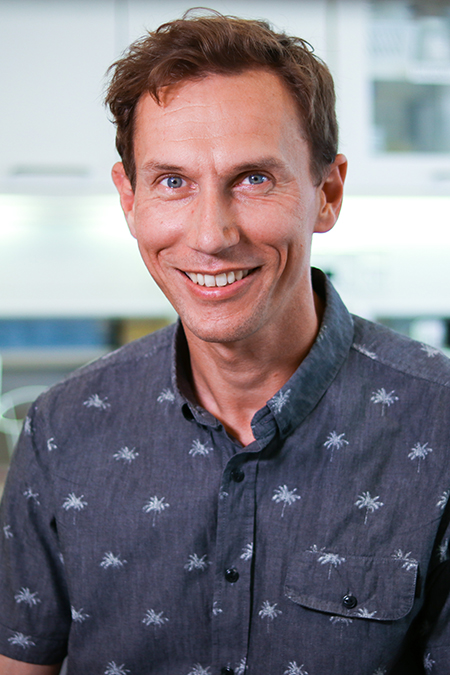One goal: to cure HIV infection
Meet Ole Schmeltz Søgaard
“My long-term goal is to contribute to the development of a cure for HIV infection. Together with my amazing colleagues here in Aarhus, I have taken a translational research approach to explore different strategies for an HIV cure.”
How do the host factors determine the clinical outcome of a virus infection? That is what Ole Schmeltz Søgaard, born 1976, is trying to understand. He is a physician-scientist intrigued by the interaction between viruses and the human immune system.
“For more than a decade, I have been working on deciphering the mechanisms that make HIV a chronic infection and investigating how the balance between the virus and the immune system might be tipped in favor of the immune system,” he explains.
This research has important implications for almost 40 million people living with HIV but as the COVID-19 pandemic has demonstrated, being prepared to tackle new virus infections depends on a deep insight into virus-host interactions.
The research field is inching closer to the ultimate goal
“My long-term goal is to contribute to the development of a cure for HIV infection. Together with my amazing colleagues here in Aarhus, I have taken a translational research approach to explore different strategies for an HIV cure. Internationally, our work in this area is widely recognized and I believe that we are in a unique position to move this research field closer to the ultimate goal - a safe and scalable cure for HIV”, Ole Schmeltz Søgaard says.

A top 3 study
During his PhD in HIV epidemiology, he attended an international HIV conference in USA in 2010. Anthony Fauci, director of NIAID and a long-time HIV-researcher, gave a plenary talk in which he highlighted HIV cure as a new area for research. The talk was in part inspired by publication of the "Berlin patient" case report - the first known person to be cured of HIV.
But some patience is needed when switching from one research area to another because it takes time to build new projects from the ground and to get results. In 2014 at the world AIDS conference in Melbourne, Ole Schmeltz Søgaard had a late-breaker talk in which he presented some spectacular results from a small pilot trial.
“The results were widely reported in main media outlets such as BBC, Süddeutche Zeitung, CNN, Danish television, and on live Australian TV and the presentation was highlighted as one of the conference's top three studies by Nature Medicine. This really opened a lot of doors both in terms of international collaborations and funding,” he says.
Since the pandemic temporarily interrupted many planned research activities, Ole Schmeltz Søgaard is now also involved in the scientific monitoring of the COVID-19 vaccine roll-out in Denmark and other COVID-19 related research projects. At the same time, he is also working on getting his HIV cure research up to speed again after the imposed restrictions.